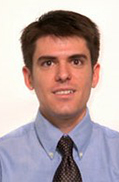ARCHIVED: NOT AVAILABLE FOR CREDIT
Pheochromocytomas and Paragangliomas
Biochemical testing is the cornerstone of the diagnosis of pheochromocytoma, but that is only one part of the story for patients with these tumors. This lecture highlights the physiology behind the symptoms of catecholamine excess and reveals how biochemical testing fits into the larger scheme of patient care, including surgical removal of these tumors.
Originally presented on September 22, 2014, in Salt Lake City, Utah.
Lecture Presenter
 | Justin E. Caron, MD Pathology Resident, Department of Pathology |
Dr. Caron is a Salt Lake City native who was interested in pathology before medical school. He studied Medical Laboratory Science as an undergraduate in the University of Utah Honors Program, graduating summa cum laude. He attended medical school at the University Of Utah School Of Medicine and is completing a residency in anatomic and clinical pathology.
Objectives
After this presentation, participants will be able to:
- Discuss the physiology, production, and metabolism of catecholamines.
- Describe the clinical presentation of pheochromocytomas and paragangliomas.
- Select appropriate laboratory tests for screening and diagnosis of pheochromocytomas and paragangliomas.
- Recognize common analytical and physiologic interferences seen in laboratory testing of pheochromocytoma.
Sponsored by:
University of Utah School of Medicine, Department of Pathology, and ARUP Laboratories
 Site Search
Site Search

